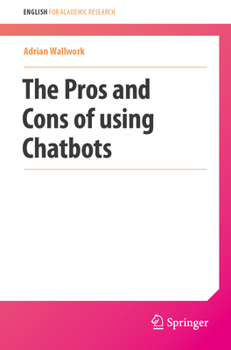The Pros and Cons of Using Chatbots
Problem
The world has got itself in a muddle with AI, and particularly with chatbots. There is a lot of misunderstanding and far too much focus on the supposed negative aspects:
Solution and aims
The aim of the book to give clear strategies for dealing with the negatives typically associated with chatbots and at the same time highlight the invaluable help that chatbots can give all types of users. Very often in the world of education, both in English- and non-English speaking countries, these features and strategies get overlooked.
The book will teach readers strategies for
distinguishing between human and AI generated texts in order to understand that both have their pros and cons coaxing bots to produce more human-like texts, and at the same time detailing methods for acknowledging usage of bots (in essays, assignments, papers etc.) identifying bias in their own and AI generated texts, and remedying this bias avoiding plagiarism avoiding being unjustly accused of AI usage (students): avoiding unjustly accusing students of using AI inappropriately (teachers, professors, journal editors)The audience is thus not just non-native speakers, who were the main audience for the English for Academic Research series. Instead this book is aimed at everyone in education, yet using the same user-friendly structure that has become a hallmark of the Academic Research series.
Outcomes
Teachers and professors will be better equipped to educate their students on how to use and not use chatbots. They will also learn that trusting their intuition with regard to whether a text was generated with a bot, or whether their students have committed plagiarism is absolutely not failsafe and should be avoided.
Students will be able to deal with the recognized challenges of using chatbots: ethics, bias, plagiarism, hallucinations and AI detection.





